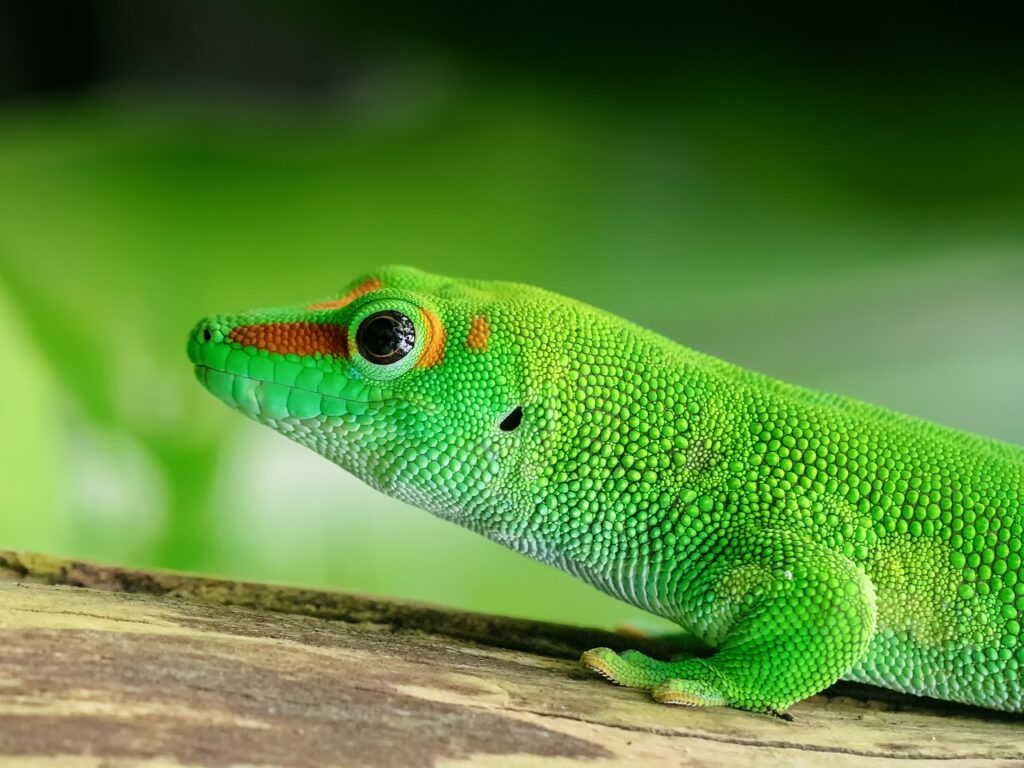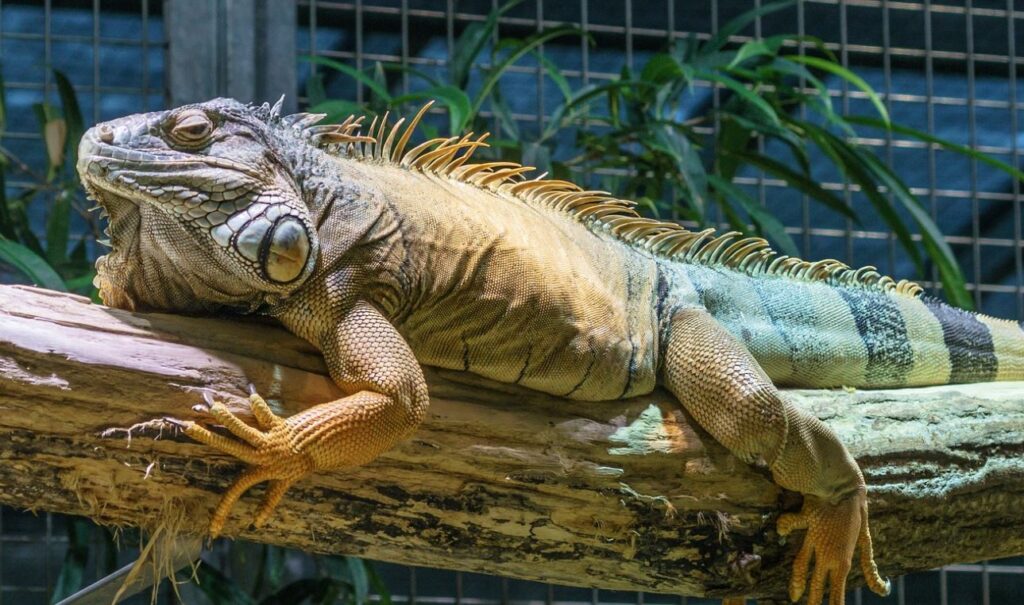Just What are the Differences Between Iguanas and Geckos?
Although they are both reptiles and both make good pets, iguanas and geckos don’t have many similarities, but they do have quite a lot of differences.
How to tell Iguanas and Geckos Apart
1. Size
There is a big difference between the size of an iguana and the size of a gecko. Geckos usually range between 1 and 12 inches long and weigh between 40 and 90 grams. Iguanas can grow to be between 4 and 5 feet long and weigh an average of 5kgs.
2. Colour
Iguanas are usually green, but some are turquoise blue, orange, and grey color. Due to the vast number of gecko species, they come in nearly every color under the sun – from blue to purple, orange to red, there is a color for everyone.

Geckos also usually have a range of different spots, stripes, and patterns on them, making them fascinating animals to see.

3. Venom
Although both geckos and iguanas are harmless, iguanas do produce a very mild venom. However, even if you were bitten by one, the venom is so weak that it wouldn’t affect you. Geckos do not produce any venom.
4. Location & habitat
Iguanas prefer to live in rainforests and are widespread across the Caribbean, Mexico, Brazil, and Central America. Geckos are found on every continent except for Antarctica. As they are highly adaptable animals, they are found in various habitats, ranging from rainforests to deserts and even mountainous regions.
5. Food
Iguanas are strictly herbivores and prefer to eat the leaves from trees. Geckos eat several small insects such as crickets, worms, and butterflies.
6. Spines
Iguanas and geckos have very different appearances, not least because iguanas have spines down their backs and tails. These are called scutes and are a defense mechanism that is used to scare away predators. Geckos do not have any spiky spines on them at all.
7. Throat
As well as having spines down their backs and tails, iguanas also have a distinct flap of skin underneath their throats which is called a dewlap. Males use this to attract the attention of female iguanas and also as a way of defending their territory. When defending their territory, iguanas puff the dewlap out to make them look much bigger and more threatening to other iguanas.
8. Tail
Iguanas and geckos are pretty versatile animals as they can regrow their tails if the need arises. Occasionally, their tail can break off between the vertebrates in it, and if this happens, they can grow it back. However, their new tail is usually thinner than the old one. It usually takes an iguana around two months to grow its tailback, while a gecko can regrow theirs within one month. Also, geckos can detach their tails if a predator grabs them as a way for them to escape.
Questions & Answers
Question: Are iguanas and geckos the same species?
Answer: Although they are both reptiles, they are different species from different family groups.
Question: Are iguanas dangerous?
Answer: No, although they may occasionally scratch or nip you, they are not dangerous and generally will never harm you.
Question: Do geckos make good pets?
Answer: Yes, they are easy to tame and very friendly and so make excellent pets.
Question: What sound do geckos make?
Answer: Geckos are extremely vocal and produce many sounds such as chirps, squeaks, and clicks.
Question: Can geckos swim?
Answer: No, geckos cannot swim, but they can run across the surface of the water. However, they do not regularly go onto the water and will always avoid it if possible.
Question: Can iguanas swim?
Answer: Yes, iguanas are excellent swimmers and are often found living near water.
Question: How big can iguanas get?
Answer: Iguanas generally live for between 10 and 15 years.
Question: Can geckos fly?
Answer: No, they cannot technically fly as they do not have wings, but when they are leaping from tree to tree, they have a skin flap that allows them to control their speed and direction, and therefore they “glide” but do not fly.
Question: How long do iguanas live?
Answer: Iguana lives for around 15 years.
Question: Do geckos have teeth?
Answer: Yes, they have small, sharp teeth, but they are not usually big enough to hurt you.
Question: Do geckos have any predators?
Answer: Geckos have many predators, and animals such as snakes, birds, rats, weasels, and many more will all kill and eat geckos.
Question: Do iguanas and geckos have three eyes?
Answer: Iguanas have a “third eye,” a lighter scale located on the top of their head and known as the parietal eye. It cannot see as such but can detect light. Geckos do not have this third eye.
Question: Are geckos endangered?
Answer: There are several different, gecko species and some are not under any threat at all, while others are officially classed as being endangered. For example – striped geckos are endangered while leopard geckos are not.
Question: How many different species of geckos are there?
Answer: There are many different species of geckos around the world – around 1,850 species of them!
Question: What is a leopard gecko?
Answer: A leopard gecko is a small and easy-to-handle gecko species that gets its name from the leopard spot markings that it has all over its body. Their native habitat is the rocky and dry desert areas of Afghanistan, Pakistan, Iran, and India.
Question: How long do geckos live?
Answer: Geckos can live for around 15 years.
Question: How many species of iguana are there?
Answer: There are 35 species of iguana, and the rarest is the blue iguana which is endangered and is only found on the Grand Cayman island. This means it is endemic to the island as it is not found anywhere else in the world.
Question: How long do iguanas and geckos take to hatch?
Answer: Gecko eggs can take anything between 35 and 89 days to hatch, while iguana eggs take between 90 and 120 days.
Question: Where do geckos and iguanas lay their eggs?
Answer: Geckos usually lay their eggs under rocks or logs in protected places. Iguanas dig a burrow in a warm and sunny spot to lay their eggs. However, neither the female gecko nor the female iguana sticks around to look after their eggs, or they’re young and walk away after laying the eggs – they don’t have a maternal instinct at all.

